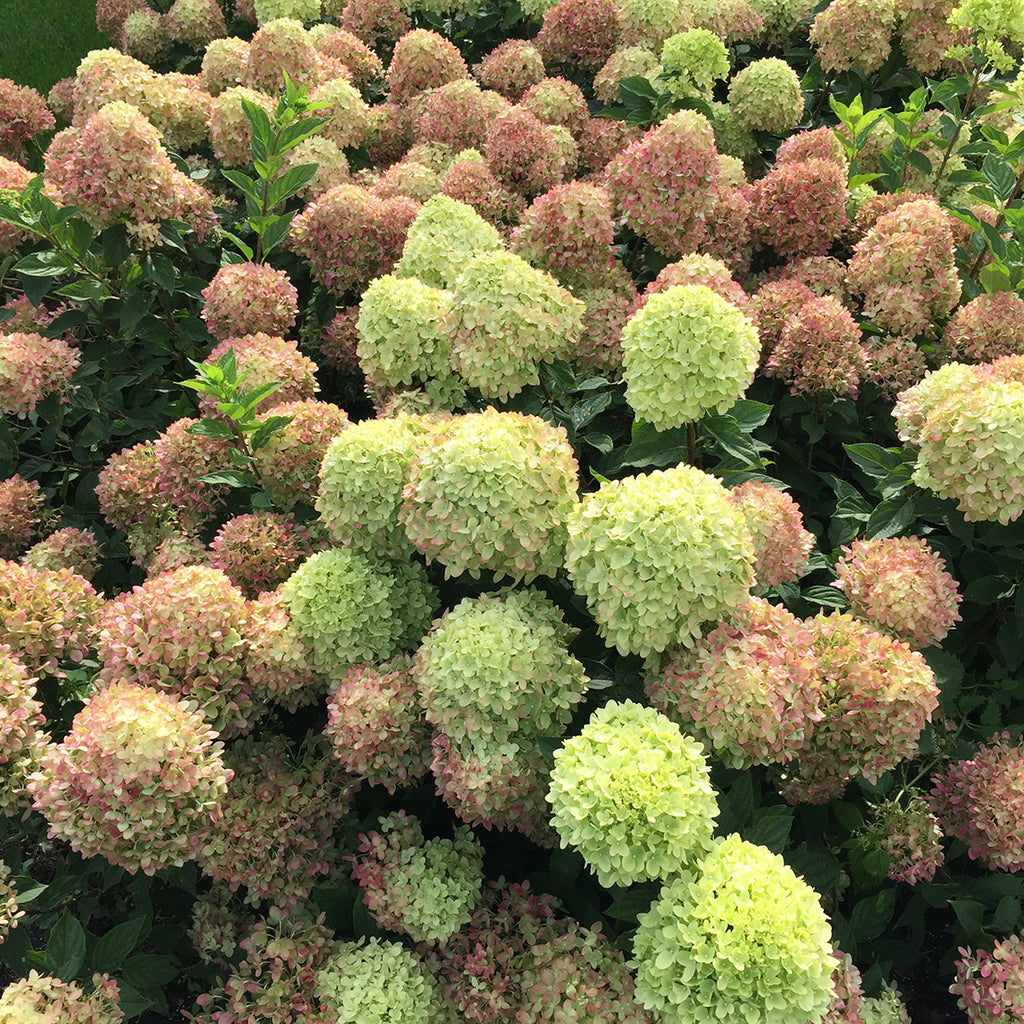Little Lime Hydrangea: The Shadeloving Hydrangea That Will Brighten Up Your Garden
Little Lime Hydrangea: The ShadeLoving Hydrangea That Will Brighten Up Your Garden
If you're looking for a hydrangea that will brighten up your garden without taking up too much space, then the Little Lime Hydrangea is a great option. This dwarf variety of the popular Limelight Hydrangea grows to just 3-5 feet tall and wide, making it perfect for small gardens or containers.
Little Lime Hydrangeas are known for their lime green flowers that turn pink in the fall. They bloom from mid-summer to early fall, and their flowers are a great addition to any garden.
In addition to their beautiful flowers, Little Lime Hydrangeas are also relatively easy to care for. They prefer full sun to part shade and well-drained soil. They are also drought tolerant once established, so you won't have to worry about watering them too often.
If you're looking for a low-maintenance hydrangea that will add a touch of beauty to your garden, then the Little Lime Hydrangea is a great choice.
Here are some of the benefits of growing Little Lime Hydrangeas:
- They are small and compact, making them perfect for small gardens or containers.
- They are easy to care for and drought tolerant.
- They have beautiful lime green flowers that turn pink in the fall.
- They are hardy in USDA zones 3-8.
Here are some tips for growing Little Lime Hydrangeas:
- Plant them in full sun to part shade.
- Provide them with well-drained soil.
- Fertilize them once in the spring with a balanced fertilizer.
- Water them regularly, especially during the first year after planting.
- Prune them in the spring to remove dead or damaged branches.
Here are some common problems that can affect Little Lime Hydrangeas:
- Leaf spot: This is a fungal disease that can cause leaves to develop brown spots. To prevent leaf spot, water your plants at the base and avoid getting water on the leaves.
- Powdery mildew: This is another fungal disease that can cause leaves to develop a white powdery coating. To prevent powdery mildew, water your plants in the morning so that the leaves have time to dry before nightfall.
- Aphids: These small insects can suck the sap out of leaves, causing them to wilt and turn yellow. To control aphids, spray your plants with insecticidal soap or neem oil.
Overall, Little Lime Hydrangeas are a beautiful and easy-to-care-for addition to any garden. With their small size, bright flowers, and hardy nature, they are a great choice for gardeners of all skill levels.
Little Lime hydrangeas are a beautiful addition to any garden, but they can be especially stunning in shady spots. These dwarf hydrangeas feature bold conical chartreuse flowers with creamy white overtones that can brighten up even the darkest corner of your yard. And because they're so compact, they're perfect for small spaces.
If you're looking for a little lime hydrangea for your shady garden, I recommend visiting . This website has a wealth of information about little lime hydrangeas, including planting, care, and troubleshooting tips. You can also find a variety of cultivars to choose from, so you can find the perfect one for your needs.
FAQ of little lime hydrangea in shade
Q: Can I plant little lime hydrangea in shade?
A: Yes, little lime hydrangea can tolerate partial shade, but it will do best in full sun. If you plant it in shade, the flowers may not be as large or colorful.
Q: What is the best soil for little lime hydrangea?
A: Little lime hydrangea prefers well-drained, moist soil. The soil should be slightly acidic, with a pH of 5.5 to 6.5.
Q: How much water does little lime hydrangea need?
A: Little lime hydrangea needs regular watering, especially during the first year after planting. Once established, it can tolerate some drought, but it will do best with moist soil.
Q: How do I fertilize little lime hydrangea?
A: Little lime hydrangea should be fertilized in the spring and fall. Use a balanced fertilizer, such as 10-10-10, and apply it according to the package directions.
Q: How do I prevent pests and diseases in little lime hydrangea?
A: Little lime hydrangea is relatively resistant to pests and diseases. However, it can be susceptible to aphids, scale, and powdery mildew. If you see any pests or diseases, treat them immediately with an appropriate insecticide or fungicide.
Image of little lime hydrangea in shade
5 different images of "little lime hydrangea in shade" from Pinterest:
- Image 1: A small, bushy little lime hydrangea plant with chartreuse flowers in full bloom, surrounded by green leaves. The plant is in a shady spot in a garden.

- Image 2: A close-up of the chartreuse flowers of a little lime hydrangea plant. The flowers are conical in shape and have a creamy white center.

- Image 3: A little lime hydrangea plant in a pot on a patio. The plant is surrounded by other shade-loving plants, such as hostas and ferns.

- Image 4: A little lime hydrangea plant in a flower bed in a shady part of a garden. The plant is surrounded by white flowers, such as phlox and daisies.

- Image 5: A little lime hydrangea plant in full bloom against a backdrop of trees. The flowers are a bright chartreuse color and the leaves are a deep green.

Post a Comment for "Little Lime Hydrangea: The Shadeloving Hydrangea That Will Brighten Up Your Garden"